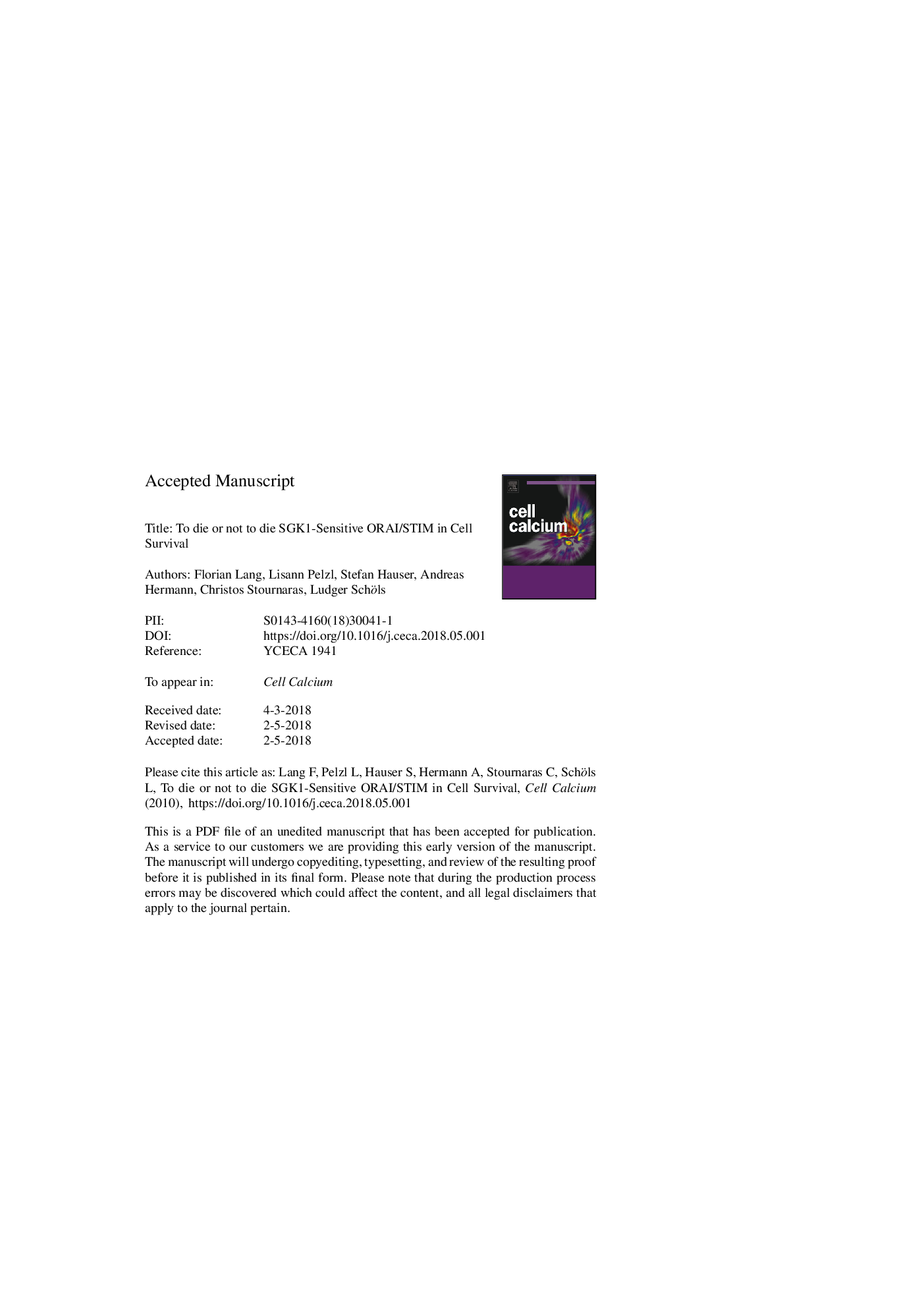| Article ID | Journal | Published Year | Pages | File Type |
|---|---|---|---|---|
| 8463319 | Cell Calcium | 2018 | 15 Pages |
Abstract
The pore forming Ca2+ release activated Ca2+ channel (CRAC) isoforms ORAI1-3 and their regulators STIM1,2 accomplish store operated Ca2+ entry (SOCE). Activation of SOCE may lead to cytosolic Ca2+ oscillations, which in turn support cell proliferation and cell survival. ORAI/STIM and thus SOCE are upregulated by the serum and glucocorticoid inducible kinase SGK1, a kinase under powerful genomic regulation and activated by phosphorylation via the phosphoinositol-3-phosphate pathway. SGK1 enhances ORAI1 abundance partially by phosphorylation of Nedd4-2, an ubiquitin ligase priming the channel protein for degradation. The SGK1-phosphorylated Nedd4-2 binds to the protein 14-3-3 and is thus unable to ubiquinate ORAI1. SGK1 further increases the ORAI1 and STIM1 protein abundance by activating nuclear factor kappa B (NF-κB), a transcription factor upregulating the expression of STIM1 and ORAI1. SGK1-sensitive upregulation of ORAI/STIM and thus SOCE is triggered by a wide variety of hormones and growth factors, as well as several cell stressors including ischemia, radiation, and cell shrinkage. SGK1 dependent upregulation of ORAI/STIM confers survival of tumor cells and thus impacts on growth and therapy resistance of cancer. On the other hand, SGK1-dependent upregulation of ORAI1 and STIM1 may support survival of neurons and impairment of SGK1-dependent ORAI/STIM activity may foster neurodegeneration. Clearly, further experimental effort is needed to define the mechanisms linking SGK1-dependent upregulation of ORAI1 and STIM1 to cell survival and to define the impact of SGK1-dependent upregulation of ORAI1 and STIM1 on malignancy and neurodegenerative disease.
Related Topics
Life Sciences
Biochemistry, Genetics and Molecular Biology
Cell Biology
Authors
Florian Lang, Lisann Pelzl, Stefan Hauser, Andreas Hermann, Christos Stournaras, Ludger Schöls,
